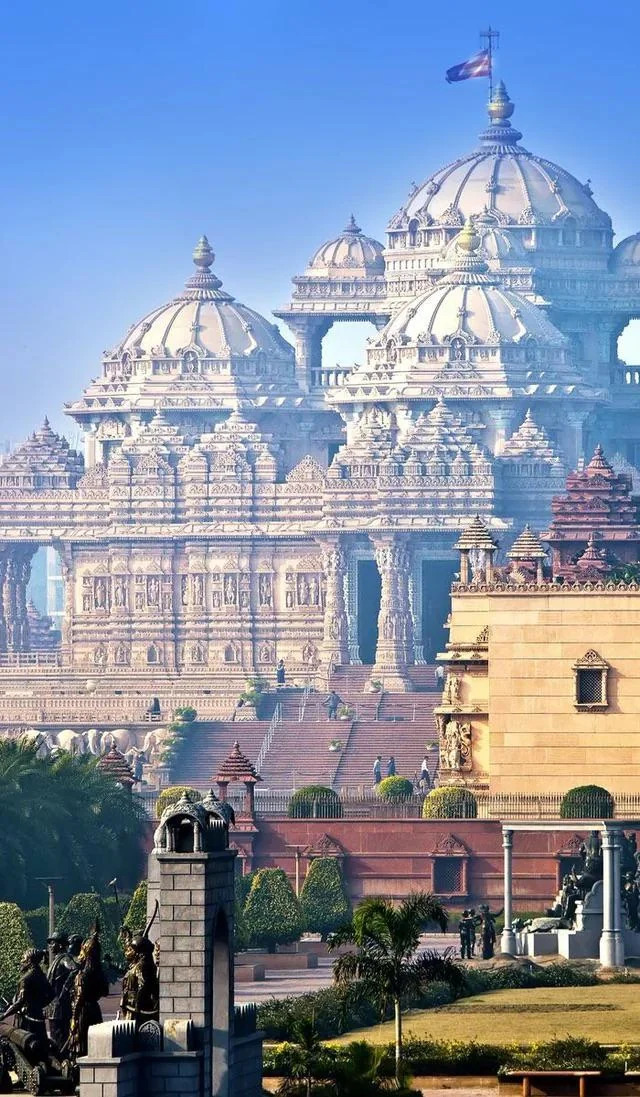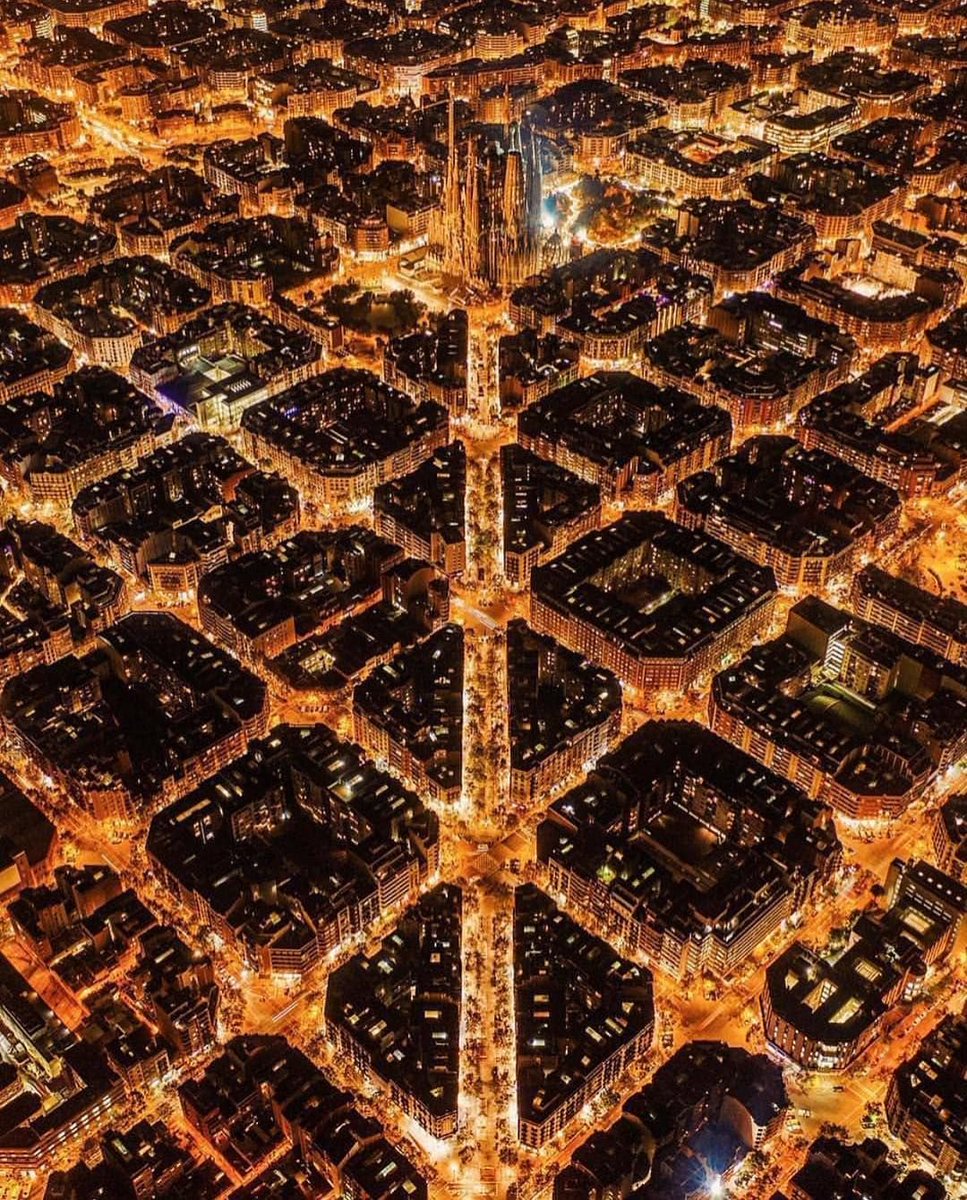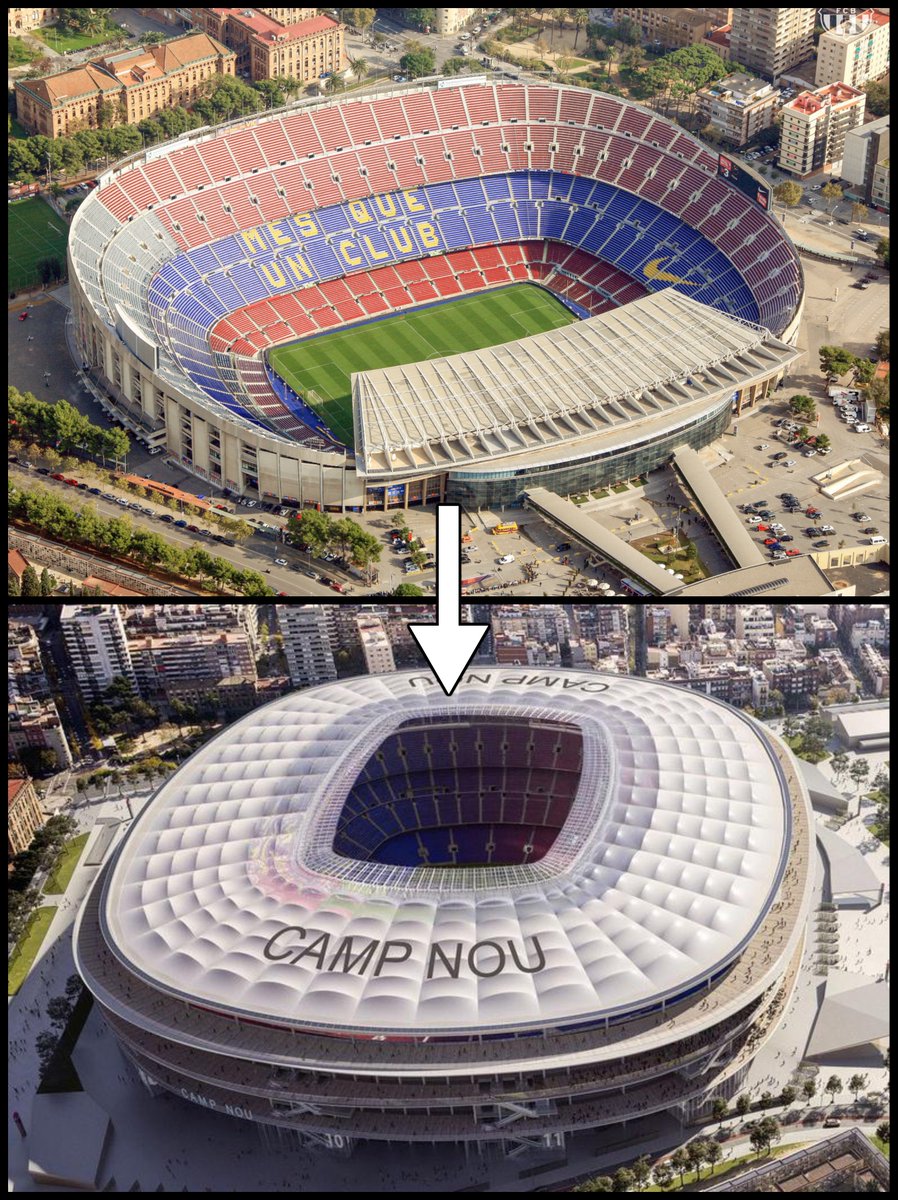This is Swaminarayan Akshardham, a colossal Hindu temple in Delhi built with marble and limestone and covered in thousands of sculptures.
But this is not an ancient temple — it is less than twenty years old.
And it might change the future of architecture...
But this is not an ancient temple — it is less than twenty years old.
And it might change the future of architecture...

The idea for Swaminarayan Akshardham goes back to 1968, but it wasn't until 2000 that construction finally started.
It was built by a Hindu denomination called Bochasanwasi Akshar Purushottam Swaminarayan Sanstha, or BAPS.
The temple was completed in 2005.
It was built by a Hindu denomination called Bochasanwasi Akshar Purushottam Swaminarayan Sanstha, or BAPS.
The temple was completed in 2005.

It was funded by private donations and built by a mix of volunteers and artisans.
The temple's design comes from ancient Hindu texts regarding art and architecture — the Shilpa and Vastu Shastras — and its structure is entirely stone, with no iron or steel.
The temple's design comes from ancient Hindu texts regarding art and architecture — the Shilpa and Vastu Shastras — and its structure is entirely stone, with no iron or steel.

The temple has a complex layout, as stipulated by those ancient texts, revolving around nine sections called mandapas, each with their own dome, name, and design scheme: 

The whole structure rests on a plinth, called the Gajendra Peeth, decorated with large sculptures of elephants and traditional stories about them: 

And the temple is filled, inside and out, with an array of at least 20,000 individually sculpted statues and decorations: 

So Swaminarayan Akshardham is a wonder and it must be unique, right?
No. BAPS have been building traditional Hindu temples just like it — made with marble and limestone, without steel, and designed according to ancient texts, decorated by artisans — for decades.
No. BAPS have been building traditional Hindu temples just like it — made with marble and limestone, without steel, and designed according to ancient texts, decorated by artisans — for decades.
Like Swaminarayan Akshardham in Robbinsville, New Jersey, the largest Hindu temple in the USA.
Construction started in 2010 and was completed in 2023 — and, like its equivalent in Delhi, this was built with the help of volunteers from all walks of life.
Construction started in 2010 and was completed in 2023 — and, like its equivalent in Delhi, this was built with the help of volunteers from all walks of life.

Another is Shri Swaminarayan in Toronto, Canada, completed in 2007.
Marble was shipped to India, sculpted and carved there by artisans, then brought back to Toronto and reassembled.
The same process used for all BAPS temples outside India.
Marble was shipped to India, sculpted and carved there by artisans, then brought back to Toronto and reassembled.
The same process used for all BAPS temples outside India.

And Shri Swaminarayan in California.
This one had a troubled planning process because of building codes that did not allow it to be constructed according to traditional methods and designs.
Eventually the code was changed and so another marvellous temple emerged.
This one had a troubled planning process because of building codes that did not allow it to be constructed according to traditional methods and designs.
Eventually the code was changed and so another marvellous temple emerged.

The list goes on and on.
A wonderful global project — and one that might change opinions about what is possible with architecture.
Because these are all traditional buildings made with help from modern methods and machines.
A wonderful global project — and one that might change opinions about what is possible with architecture.
Because these are all traditional buildings made with help from modern methods and machines.

When people ask why we no longer build "traditional architecture", the answer is rarely about aesthetics — few people say traditional architecture is ugly.
Rather, the response is that we simply cannot afford to, or it is impractical, or we don't have the necessary expertise.
Rather, the response is that we simply cannot afford to, or it is impractical, or we don't have the necessary expertise.
These BAPS temples fly in the face of all those explanations — and they are not alone in this regard.
The 18th century Frauenkirche in Dresden, destroyed during the Second World War, was left in ruins for decades.
But it has been rebuilt in the last thirty years.
The 18th century Frauenkirche in Dresden, destroyed during the Second World War, was left in ruins for decades.
But it has been rebuilt in the last thirty years.

The Old Town of Frankfurt has also been rebuilt, along with buildings like the Cathedral of Christ the Saviour in Moscow, demolished under Stalin, the Temple of the Golden Pavilion in Kyoto, burned down in the 1950s, and the Gothic Cloth Hall of Ypres, destroyed in WWI. 

As for new projects there are — along with those BAPS temples — places like the Cathedral of Saint Sava in Belgrade or the People's Salvation Cathedral in Bucharest.
In both cases Orthodox churches built using a mix of traditional design and modern methods and materials.
In both cases Orthodox churches built using a mix of traditional design and modern methods and materials.

Then there's something like Ox Horn Campus in Dongguan, the new R&D headquarters built by Huawei.
Over 25,000 people work here, a sort of fantasy town composed of more than 100 buildings inspired by or directly based on towns in Europe:
Over 25,000 people work here, a sort of fantasy town composed of more than 100 buildings inspired by or directly based on towns in Europe:

The point here is not that every building should be traditionally designed, nor that modern architecture is bad — much is wonderful and in many circumstances it is the better option.
Rather, the point is that we can clearly have both, even though many people say otherwise.
Rather, the point is that we can clearly have both, even though many people say otherwise.
And the strangest thing of all — though the most encouraging — is that despite obfuscations about cost and practicality, the only necessary condition for creating all these traditionally designed buildings was the simple desire to do so.
You get the architecture you want.
You get the architecture you want.
That is what Yogiji Maharaj said in the 1960s when he proposed these temples.
He believed traditional architecture was important for faith, culture, and community; a belief shared by his successor Pramukh Swami Maharaj.
They desired traditional architecture — and they built it.
He believed traditional architecture was important for faith, culture, and community; a belief shared by his successor Pramukh Swami Maharaj.
They desired traditional architecture — and they built it.
So Swaminarayan Akshardham is a marvellous temple in its own right — but also one that sends a powerful message.
It's easy to think that traditional architecture is impossible in the 21st century... but this temple suggests that is only true if we refuse to believe otherwise.
It's easy to think that traditional architecture is impossible in the 21st century... but this temple suggests that is only true if we refuse to believe otherwise.

• • •
Missing some Tweet in this thread? You can try to
force a refresh






















